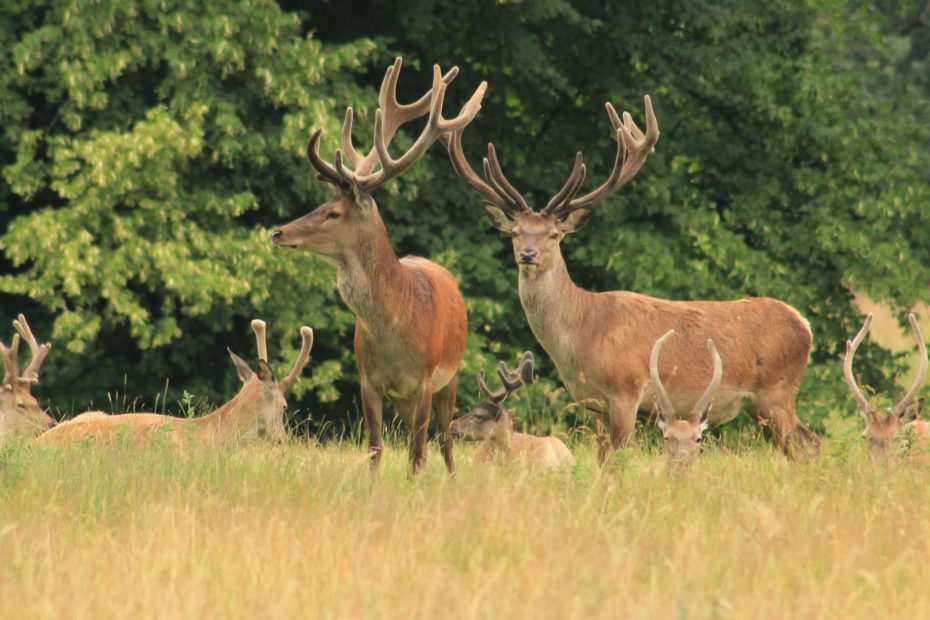These are the six deer species found in the United Kingdom. Each species has its own unique characteristics and adaptations that make them fascinating to observe in their natural habitats.
- Red Deer (Cervus elaphus): The largest deer species in the UK, the red deer is known for its majestic appearance. Males, called stags, possess impressive antlers that can span up to a meter in length. They have a reddish-brown coat during the summer, which turns into a grayish-brown shade in winter. Red deer are mainly found in the Scottish Highlands, but they can also be seen in parts of England and Wales.
- Roe Deer (Capreolus capreolus): The roe deer is a graceful and relatively small species found throughout the UK. Its reddish-brown summer coat and grayish-brown winter coat allow it to blend seamlessly with its surroundings. Roe deer are known for their distinctive white rump patch, which is easily visible when they are running. They prefer woodland habitats but can adapt to a variety of environments, including farmlands and parks.
- Fallow Deer (Dama dama): Fallow deer are known for their striking coat patterns, which can vary from light brown with white spots to dark brown or black. They have a characteristic “palmate” antler shape in mature males, with broad and flattened structures. Fallow deer were introduced to the UK by the Normans and are typically found in deer parks and woodlands across England, although they can also be seen in parts of Scotland and Northern Ireland.
- Sika Deer (Cervus nippon): Originally from East Asia, sika deer were introduced to the UK in the 19th century. They have a reddish-brown coat and are slightly smaller than red deer. Sika deer have a unique vocalization called “whistling,” which they use for communication. They are primarily found in Scotland, particularly in the Highlands, but can also be spotted in parts of England and Northern Ireland.
- Muntjac Deer (Muntiacus reevesi): The muntjac, also known as the barking deer, is the smallest deer species in the UK. They have a reddish-brown coat and short antlers in males, but these are often hidden beneath a tuft of hair. Muntjacs are known for their distinctive bark-like vocalizations. Originally introduced from Asia, they are widespread across England and parts of Wales, often found in woodland habitats and gardens.
- Chinese water deer (Hydropotes inermis): The Chinese water deer, also known as the vampire deer due to its long, protruding canine teeth, is a small species of deer that has established a presence in the United Kingdom. They were introduced to the UK in the early 20th century and have since thrived in wetland habitats, particularly in East Anglia. Chinese water deer have a distinctive appearance, with a stocky body, short legs, and a russet-colored coat. Unlike other deer species, they lack antlers, but males have elongated upper canine teeth, or tusks, which they use for territorial disputes. Their preference for marshy environments and their ability to conceal themselves in dense vegetation make them well-suited to the reedbeds and river valleys of the UK. Chinese water deer are an intriguing addition to the diverse deer population in the country.
